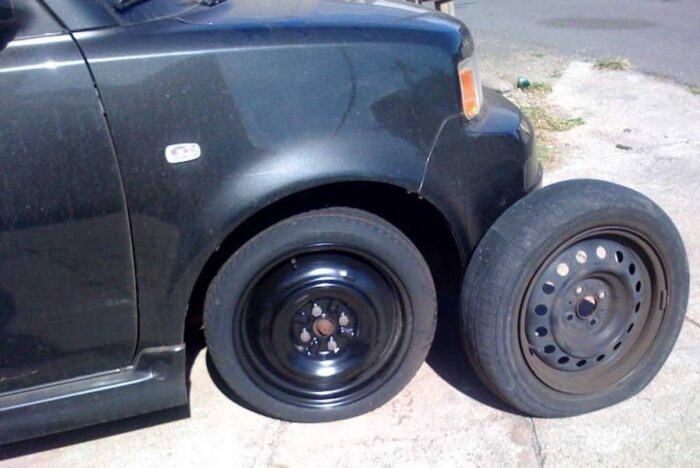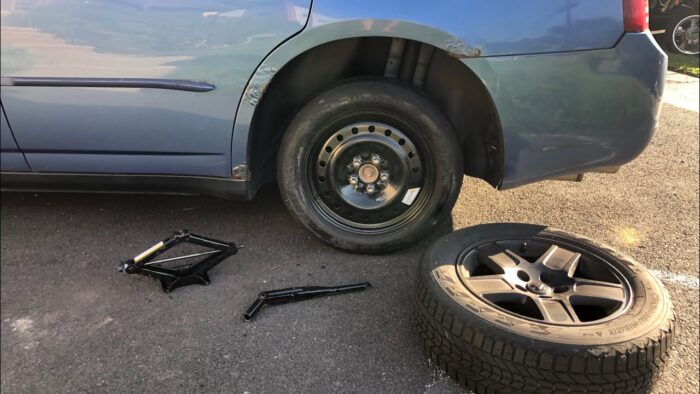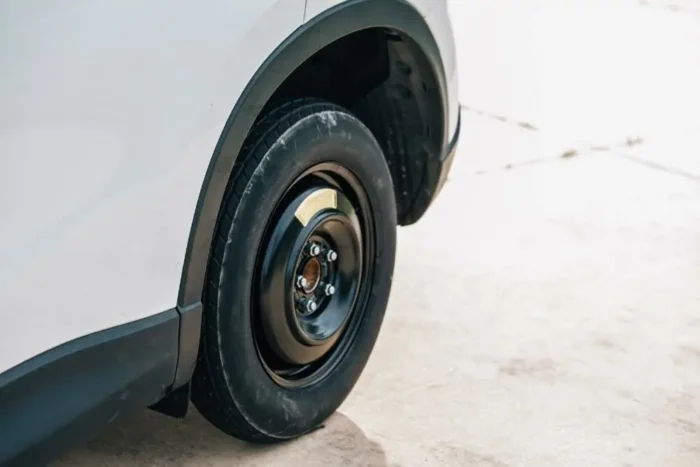Buckle up, folks! Today we’re taking on a question that’s been plaguing drivers for decades: can you drive 200 miles on a donut? We’ve all been there – stranded with a flat tire and only the spare to rely on. But is it safe to take that tiny little wheel out on the open road for an extended journey? Stick around as we explore this burning issue and find out if your trusty donut has what it takes to go the distance.
Table of Contents
What is a donut?

Driving on a donut tire, also known as a temporary spare tire, is a common occurrence for many drivers. These small, thin tires are designed to be used for short distances, typically no more than 50 to 70 miles, and at a reduced speed of 50 mph or less. But can you drive 200 miles on a donut tire?
The short answer is no. Donut tires are not designed for extended use and driving on them for 200 miles can pose serious safety risks. Here’s why:
- Limited durability: Donut tires are not built to last. They are designed to be a temporary fix until a proper tire can be installed. The thin, lightweight construction of a donut tire is not meant to withstand the weight and pressure of a full-size vehicle for extended periods of time.
- Poor handling and stability: Donut tires are smaller than regular tires and have a lower profile, which can affect the handling and stability of your vehicle. The smaller size and reduced contact with the road can cause your vehicle to sway or become unstable, particularly at high speeds.
- Increased risk of blowout: Driving on a donut tire for an extended period of time increases the risk of a blowout. The tire is not built to handle the stresses of extended driving, and the risk of a sudden blowout is much higher than with a regular tire.
- Reduced braking ability: Donut tires have a smaller surface area, which means they have less contact with the road. This can lead to reduced braking ability, particularly in wet or slippery conditions.
- Legal considerations: It’s also important to note that driving on a donut tire for an extended period of time may be illegal in some states. While regulations vary by state, driving with a temporary spare tire beyond the recommended distance can result in a citation and fine.
In summary, driving on a donut tire for 200 miles is not recommended. While they can provide a temporary fix in the event of a flat tire, they are not built to handle extended use. If you find yourself in a situation where you need to drive on a donut tire, it’s important to get a proper tire installed as soon as possible.
In addition to the safety concerns, driving on a donut tire for an extended period of time can also cause additional wear and tear on other parts of your vehicle. The reduced handling and stability can cause extra stress on your suspension and steering components, while the increased risk of blowout can damage your wheel and brake system.
It’s also important to note that not all donut tires are created equal. Some vehicles may come with a full-size spare tire or a different type of temporary tire that may be able to handle more mileage. However, it’s always best to consult your owner’s manual and follow the manufacturer’s recommendations for tire use.
While driving on a donut tire may seem like a quick fix, it’s important to remember that they are not designed for extended use. Driving on a donut tire for 200 miles can pose serious safety risks and cause additional damage to your vehicle. If you find yourself in a situation where you need to use a temporary spare tire, it’s best to get a proper tire installed as soon as possible.
How much can you drive on a donut?

If your car has a flat tire, you may be able to drive on a donut spare tire for a short distance, but it’s not safe to go too far. Here’s what you need to know about driving on a donut.
A donut spare tire is meant for temporary use only. It’s not safe to drive long distances on a donut spare because it’s not designed for high-speed use and it can wear out quickly. If you have a flat tire, it’s best to replace it with a full-size spare tire as soon as possible.
What are the risks of driving on a donut?
Driving on a donut spare tire for too long can damage your car. The rim of the donut spare can rub against the sidewall of the tire, causing the tire to wear down or even burst. Driving on a damaged tire is dangerous and could cause an accident.
It’s also important to keep in mind that donut spares are usually smaller than regular tires, which means they offer less traction and stability. This can make driving in wet or icy conditions more challenging – and more dangerous. If you have no other choice but to drive on a donut spare, be sure to go slowly and carefully.
Pros and Cons of driving on a donut
Let’s take a look at the pros and cons of driving on a donut.
Pros:
- It can get you to safety. If you have a flat tire in the middle of nowhere, driving on a donut until you reach a safe place is better than walking.
- It can buy you some time. If you’re in the middle of changing a flat tire and realize you don’t have all the tools you need, driving on a donut until you reach a service station can help prevent further damage to your car.
Cons:
- It’s not safe. Driving on a donut is dangerous because they are not meant for long-distance travel. They are smaller and made of thinner material, which means they can easily become damaged or even blow out while you’re driving.
- It’s hard on your car. Driving on a donut puts extra stress on your car’s suspension and steering, which can lead to more serious problems down the road.
How to change a donut

If you’re wondering how to change a donut, the process is actually quite simple. First, you’ll need to gather a few supplies: a new donut, a flat head screwdriver, and a pair of pliers. Then, follow these steps:
- Use the screwdriver to loosen the bolts that hold the old donut in place.
- Remove the old donut and discard it.
- Place the new donut onto the axle.
- Use the pliers to tighten the bolts back into place.
- That’s it! You’ve successfully changed a donut.
Conclusion
In conclusion, driving more than 200 miles on a donut tire is not recommended. It can be dangerous and cause harm to your car if done for an extended period of time. The best option would be to get the flat tire fixed as soon as possible or replace it with a spare tire. If you do decide to drive on the donut, use caution and take frequent breaks so that you can check the condition of the tire and keep yourself safe on the road.

